Healthcare Software Development: Your Strategic Guide To Success In The UK Market
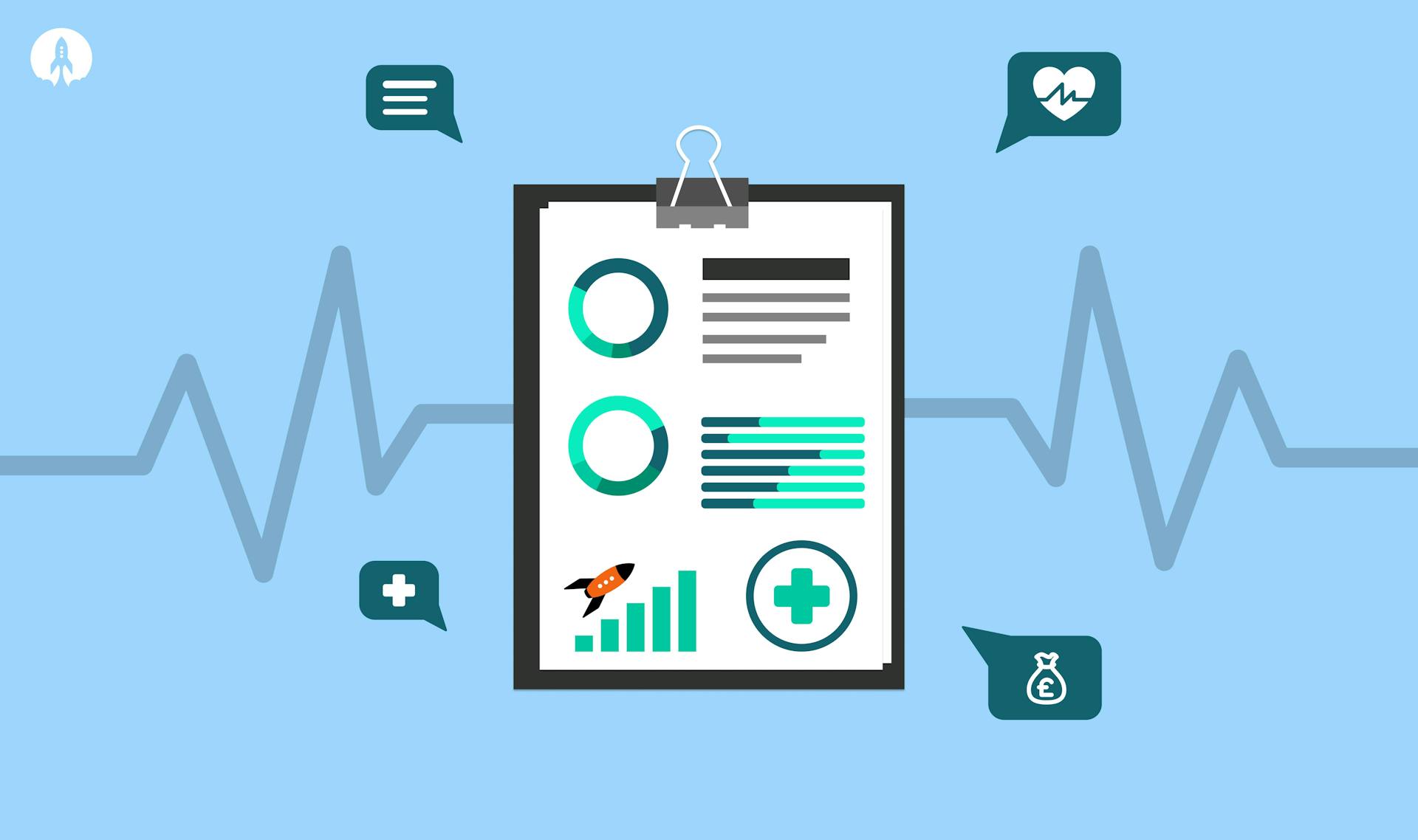
Fueled by massive investment, the UK healthcare software development industry is booming, and it’s projected to reach $18.74 billion by 2030.
In this transformative landscape, custom healthcare software promises to:
✅ Streamline processes
✅ Enhance patient experiences
✅ Revolutionise care delivery
This article is your strategic guide for navigating medical software development in the UK.
We explore the development process, strategies for ensuring NHS compliance, market trends, and a future where technology empowers better healthcare outcomes.

Healthcare software development refers to the process of designing, building, testing, and deploying software applications specifically tailored to the needs of the healthcare industry.
This includes software solutions for medical professionals, patients, administrators, and researchers.
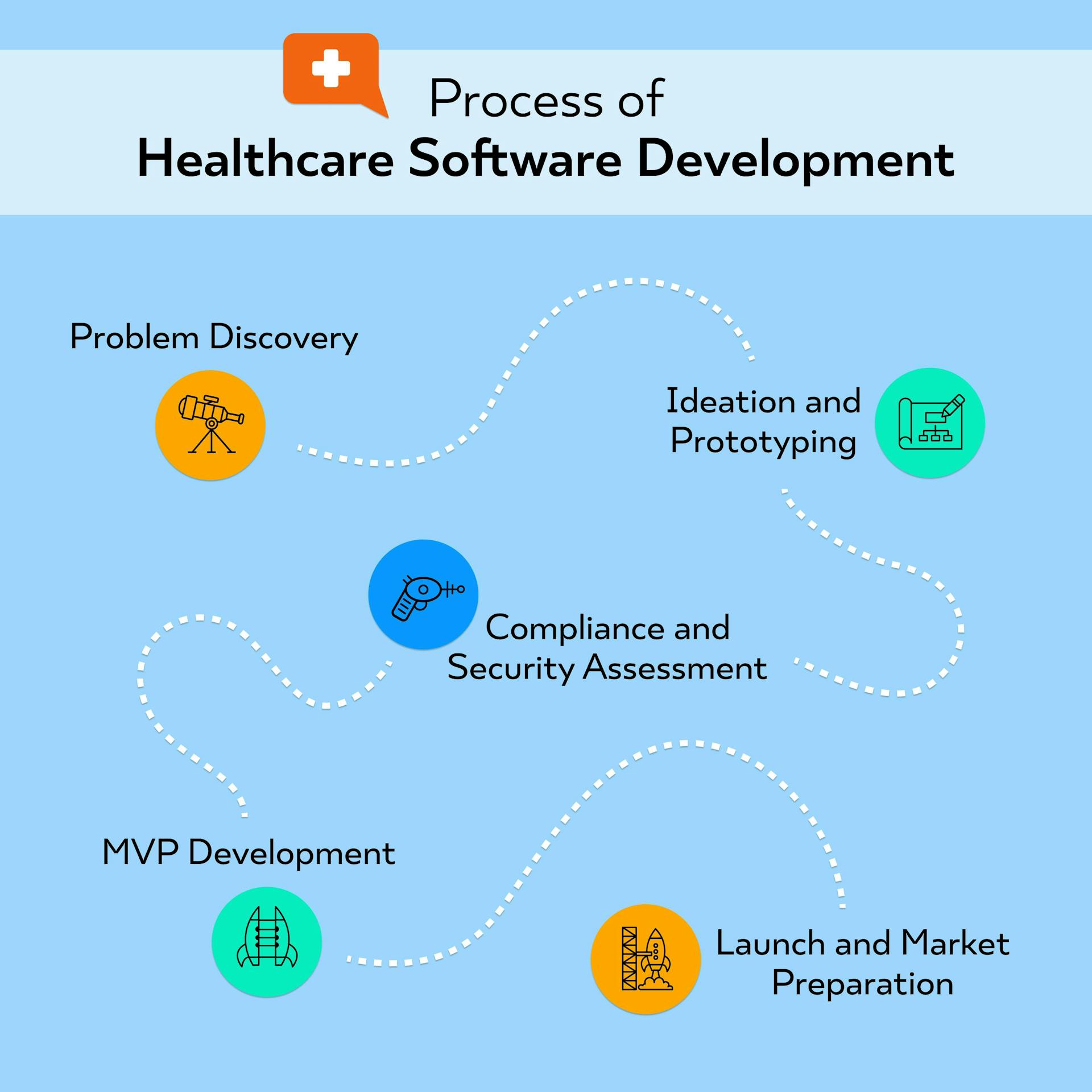
Custom Healthcare Software Development Process
Step 1: Problem Discovery
First, you’ll need to accurately define the core problem your software intends to solve. Is it streamlining a process, improving diagnostics, or empowering patients?
This initial stage is arguably the most important in custom healthcare software development. A clearly defined problem – validated through user insights – will steer your product in the right direction from the start. Here's how to approach it:
Define the Need
When articulating the problem you aim to solve for healthcare organisations, avoid vague problems like "inefficient record keeping". Instead, ask: "What specific tasks take doctors too long?" or "Where do patients experience the most frustration in accessing care?"
Another consideration is who the primary users of your healthcare software solution will be.
Are you addressing a challenge for patients, or medical professionals like doctors, nurses, administrative staff, or researchers?
Understanding your target user is key, but it's necessary to go even deeper:
💡Quantify the problem: If you can say, "Doctors spend an average of X hours per week on this task", instead of "This task is time-consuming", your solution is far more compelling.
💡The impact of errors: Can you quantify the negative consequences of the problem? For example, "These paperwork errors lead to an average delay of Y days in starting treatment".
The key point here is that if data exists that pinpoints the extent of the problem (time wasted, errors made, etc.), this bolsters your case for developing your product.
User Research
Use different user research methods to gain a deep understanding of the problem you're aiming to solve. Here are a few ways to do user research:
- Interviews that allow for in-depth conversations to uncover the root causes of challenges.
- Surveys that reach a broader audience and provide data that quantifies the problem's impact.
- Ethnographic studies – where you observe users in their work environment – which could reveal insights and behaviours they might not even be aware of.

User research is crucial because it prevents building solutions based on faulty assumptions. Engaging users early on saves time and resources, ensuring your product meets their needs.
Understanding their motivations is vital for successful adoption. Plus, users themselves could be a fantastic source of innovative ideas and solutions you might never have considered on your own.
Understand the Competition
Part of defining the problem is looking at the competition. You’ll need to dig in deep here. Go beyond direct rivals. Are there partial solutions or workarounds people are using?
Analyse current solutions in the healthcare sector from the user's perspective: What do their products do well? Where do users struggle?
This analysis helps pinpoint where your software can offer unique value, differentiating itself in the market.
Step 2: Ideation and Prototyping
After clearly defining the problem you're aiming to solve, it's time to unleash your creativity and explore potential solutions. In this phase, embrace the following principles:
Brainstorming Beyond the Obvious
Don't just tweak existing solutions; question fundamental assumptions about how things are done within a particular healthcare setting.
Embrace diverse perspectives by including healthcare providers, patients (if feasible), and people from outside the industry to spark unconventional thinking.
The key here is to focus on generating many ideas quickly. Evaluation comes later.
Create Low-Fidelity Prototypes
The software development life cycle begins with simple sketches, paper prototypes, or flowcharts that visualise basic concepts.
Progress to clickable digital prototypes with tools like Figma or InVision. These simulate functionality without full coding.

Prototypes should test the essential elements of your solution; don’t get bogged down in design details at this stage.
Get Feedback
Even rough prototypes can reveal user pain points and validate your direction.
Watch how users interact with the prototype and ask open-ended questions to understand how they would use it in their workflow.
Avoid questions that lead to "yes/no" answers. Instead, try:
🔸"Talk me through what you're trying to do here".
🔸"What surprised you about how this works (or doesn't work)?"
🔸"If you could change one thing about this feature, what would it be?"
🔸"How would you envision using this in your daily work?"
This stage is about experimentation and flexibility. Don't fear failure – embrace the insights it brings as you move closer to a solution that truly wows your users.
Step 3: Compliance and Security Assessment
Compliance
Gain familiarity with the key regulations governing your health tech area. Compliance must be a consideration from the earliest design phases onwards to avoid costly reworking down the line.
In the UK healthcare landscape, specific regulations and standards apply to software developers who handle medical data.
This can be a complex area—we'll dive deeper into essential NHS-related compliance considerations later in this article.
Prioritising Security
Healthcare and patient data/patient records are highly sensitive, and robust security measures are essential to protect them.
A single data breach can have severe financial and reputational consequences.
For example, in 2023, the average cost of a healthcare data breach was $10.93 million per incident. Additionally, non-compliance with regulations like GDPR can result in hefty fines.
Embed security practices from the start by using encryption, implementing strict access controls, ensuring secure healthcare data storage, and conducting regular audits. Never treat security as an afterthought—it should be a cornerstone of your software design.

Seek guidance from healthcare compliance and security experts early in the process to prevent costly rework and earn user trust.
Step 4: MVP Development
Navigating regulations and ensuring robust security should be woven into your development process.
As you build your minimum viable product (MVP), these considerations remain vital. Here's how to create a functional and compliant MVP, setting the stage for successful pilot testing.
Focus on the Heart of the Problem
A key point to remember is to focus on the heart of the problem – what's the absolute minimum set of features that directly addresses the pain point you identified for users?
No doubt your product offers a range of solutions for healthcare professionals, but you must resist feature creep by ruthlessly prioritising.
It's better to have a few things work flawlessly than an abundance of half-baked features. Think of your MVP as a foundation, with a clear roadmap for what to add later on.
Embrace an iterative approach. Your MVP should be released in smaller stages to collect early feedback, and then you refine it accordingly. This flexibility is crucial – be prepared to adjust your course based on real-world user insights.
Deploy and Test
Select a pilot environment that closely mirrors where your software will ultimately be used. Choose a group of test users who are representative of your target market.
During the pilot phase, provide support and closely observe how users interact with your software in a real-world healthcare setting.
Collect user feedback from healthcare organisations through various methods, including surveys, interviews, and usage data analysis.
Prioritise the feedback that has the most significant impact on improving the user experience. Keep track of all feedback and document how changes are made (or not made!) in response.
Even with careful planning, anticipate technical glitches and usability problems during the pilot phase. Have processes in place to address issues swiftly.
Never underestimate the importance of a user-friendly interface; even small adjustments can significantly boost adoption.
Step 5: Launch and Market Preparation
Bringing a healthcare software product to market requires careful planning. When targeting the NHS, for example, these considerations are vital:
Approval/Certification
If your software qualifies as a medical device, it will need regulatory approval in the form of a UKCA marking.
Factor these timelines into your project plan—self-certification may take 1-3 months, and processes involving a regulatory body often require 6-12 months or more.
⚠️ Note: These are general timelines. The specific process and duration will depend on your product and any applicable regulations.
Marketing to the NHS
Understanding NHS procurement processes is crucial. Unlike a single centralised buyer, you'll need to navigate a landscape of hospitals, trusts, and other organisations. Your marketing strategy should focus on:
➡️ Targeting the right audience: Reach decision-makers such as administrators, IT leaders, and especially clinicians who would understand how your software could solve their everyday problems.
➡️ Benefits over features: Emphasise the pain points your software would resolve for the NHS, such as improved patient care, efficiency gains, cost savings, and overall organisational value.
When describing features, tie them back to how the NHS benefits. For example:
✔️Feature: Secure patient messaging
✔️Problem it addresses: Reduces inefficient phone tagging, frees up staff time (efficiency gain)
✔️Additional benefit: Empowers patients to self-manage, potentially avoiding the need
for some in-person visits (cost savings).
Support and Training
To facilitate smooth adoption, a healthcare software development company must provide user-friendly onboarding, clear documentation, and diverse support channels (phone, online, etc.). Also, plan for ongoing training as new staff join, updates, and refresher sessions.
Navigating the NHS Landscape
Developing healthcare software for successful adoption within the NHS requires understanding its unique requirements and policies. Here's a breakdown of key considerations:
Data Sharing and Integration
The ability to work within the existing NHS IT infrastructure is crucial. Utilise Organisation Data Service (ODS) APIs to connect with NHS systems and retrieve relevant data securely.
Clinical Safety is Non-Negotiable
The NHS requires software to be clinically safe, minimising potential patient harm.
Developers must adhere to clinical risk management standards established by the Health and Social Care Act of 2012, specifically standards DCB0129 for software developers and DCB0160 for care organisations deploying and using the software.
A Clinical Safety Officer (CSO) must be nominated or hired to oversee compliance with DCB0129.
Digital Technology Assessment
All new digital health technologies should be evaluated against the Digital Technology Assessment Criteria (DTAC).
This ensures your software aligns with NHS requirements in the following areas:
- Data protection
- Security
- Interoperability
- Usability and accessibility
Conduct a thorough self-assessment against the DTAC when considering whether the product is ready for NHS use.
API-First Approach
The NHS emphasises building software with a focus on integration. This means prioritising well-documented APIs that are accessible online.
Think of APIs as digital bridges – they allow your software to connect and share data with other NHS systems seamlessly.
The NHS uses common standards like OpenAPI and FHIR to ensure everything works together smoothly. By prioritising APIs up front, you're making your product more compatible and future-proof within the NHS landscape.
ℹ️ Here are the NHS’s API policies and best practice guide.
💡Pro-tip: Stay up to date
NHS policies and guidelines constantly evolve, so ensure you regularly check for updates on the NHS Digital website.
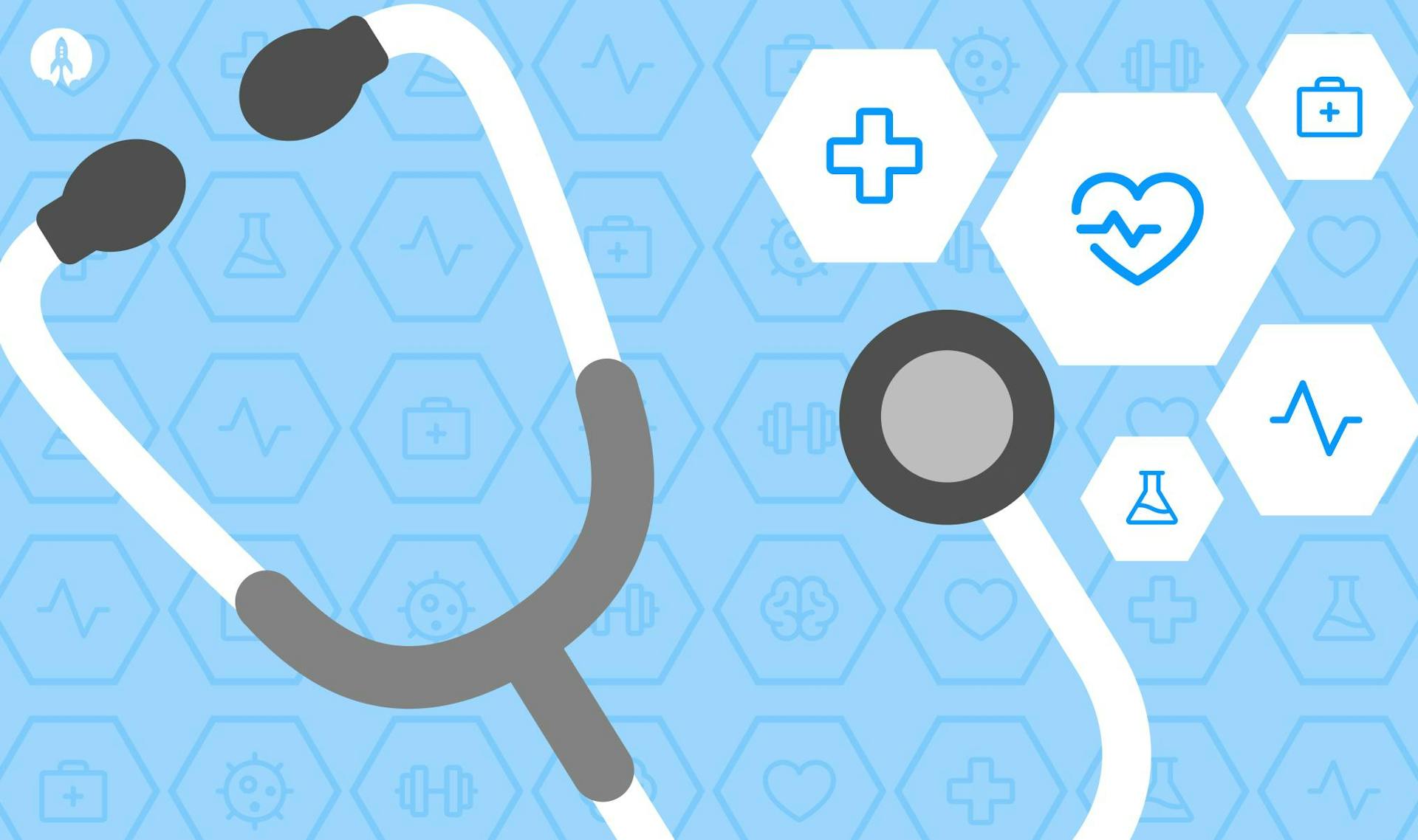
Key Takeaways for NHS Software Development
✔️ To tailor your outreach, research the roles of trusts and clinical commissioning groups (CCGs), and how they influence decision-making.
✔️ Demonstrate a deep understanding of NHS needs and challenges in your marketing and communication.
✔️ Prioritise seamless integration with existing NHS systems through APIs and adherence to data standards (FHIR).
✔️ Gather clinical studies or data that support your software's claims.
✔️ Complete a DTAC self-assessment early on to identify any potential gaps.
✔️ Be patient; the NHS procurement process can be slow. Build relationships and consider collaborating with established partners to gain a foothold.
The Opportunities in Healthcare Software Development
The healthcare software market is booming, offering immense opportunities for innovation.
The UK market alone is projected to grow from $5.49 billion in 2022 to $18.74 billion by 2030, fueled by these key drivers:
✅ Efficiency imperative: The need to streamline healthcare operations, cut costs, and optimise resource utilisation remains urgent.
✅ Patient empowerment: Growing demand for patient-centred tools that provide greater control over health data and personalised care.
✅ Technological leaps: AI, machine learning, and other cutting-edge technologies are revolutionising diagnostics, treatment, and decision-making.
✅ NHS transformation: The NHS's investment in digital health initiatives fosters a receptive market for innovative solutions. This commitment is substantial, with £3.4 billion pledged over the next three years.
✅ The pandemic factor: The COVID-19 crisis accelerated the adoption of healthcare apps, creating new use cases and boosting demand.
✅ Aging population: The need for custom software solutions that manage chronic conditions and support healthy ageing will only increase.
The NHS plays a pivotal role in the UK medical software market. As a major buyer and driver of innovation, it sets the standards for custom software development providers. NHS digital initiatives promote software adoption, while strict regulations on data privacy, clinical safety (e.g., DTAC) and other requirements shape the solutions being developed. Meeting NHS needs is crucial for success in this market.
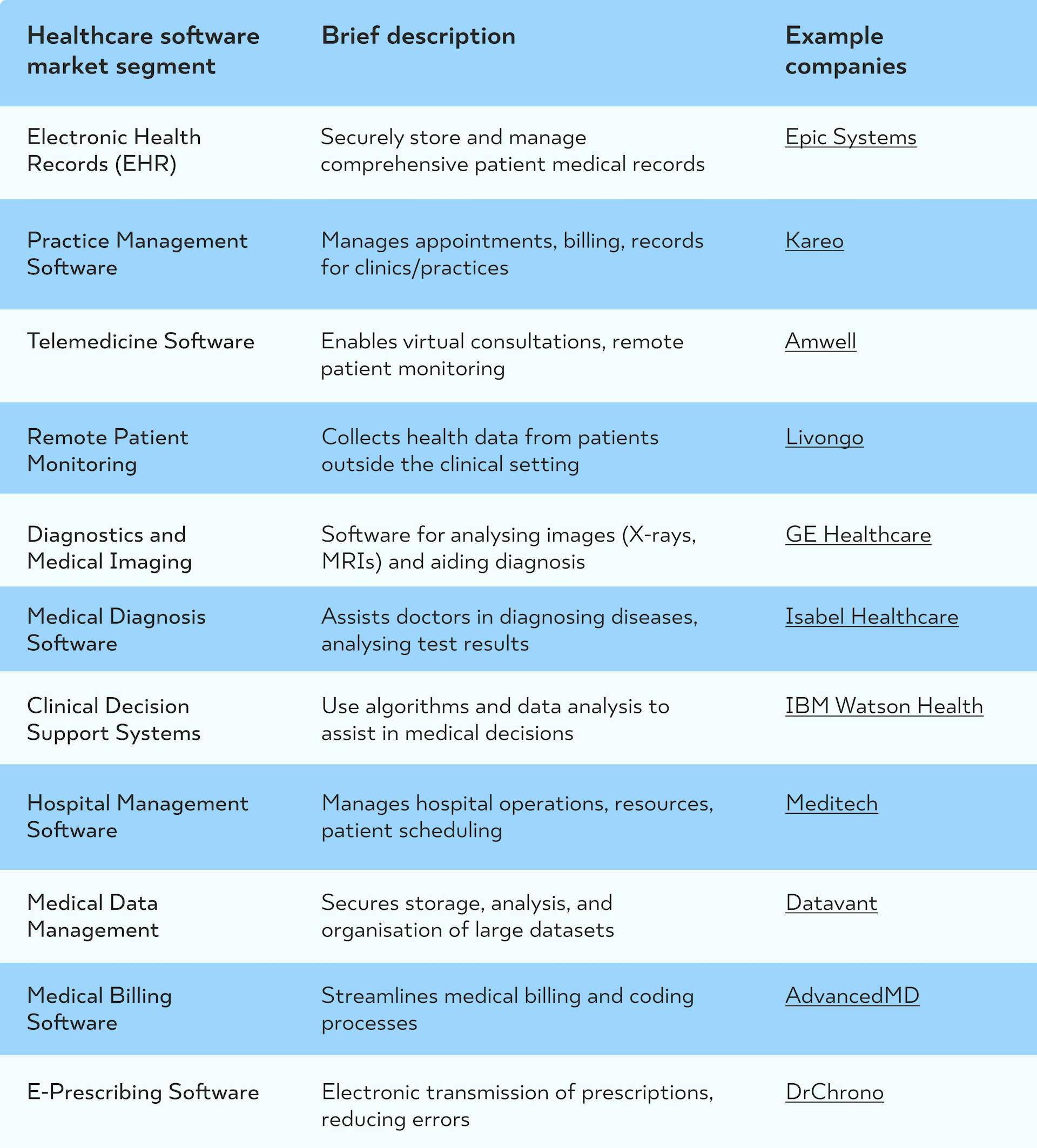
💡Hungry for more health tech innovation? Check out our guide to the top companies transforming this space in 2024.
Opportunities for Healthcare Software Development Services
Spotlight on AI and Machine Learning
Artificial intelligence (AI) and machine learning (ML) hold the power to transform the way medical institutions approach diagnosis, treatment, and patient care.
By harnessing these technologies, healthcare software solutions can:
💡Aid in diagnostics: Imagine AI software analysing X-rays, MRIs, or other medical images, assisting doctors in pinpointing abnormalities or subtle disease signs. This leads to earlier and more accurate diagnoses, improving patient outcomes.
💡Predict risks: ML algorithms sifting through massive amounts of patient data can identify individuals at higher risk for conditions like heart disease, diabetes, or certain cancers. This empowers preventative care, allowing for early interventions to change the course of a patient's health.
💡Personalise treatment: AI can analyse a patient's medical history, genetic data, and other factors to suggest the most effective medication or treatment plan for them. This personalised approach promises to maximise treatment success and minimise side effects.

AI and ML have the potential to give healthcare providers the greatest gift of all – more time. By automating the mundane, doctors can focus on the human side of medicine".
💡Ready to dive deeper into the role of AI in healthcare? Explore our comprehensive guide for insights and solutions.
The Rise of Interoperability
True transformation in healthcare software hinges on connecting with existing healthcare systems seamlessly.
This is particularly critical within the NHS, where diverse technologies must work together effectively.
As we mentioned above, APIs are standardised communication channels. Well-designed APIs allow your software to:
➡️ Access NHS data: Securely retrieve patient information from NHS-approved sources, enhancing decision-making and eliminating redundant data entry
➡️ Update electronic health records (EHRs): Upload results, diagnoses, or treatment information directly into a patient's EHR, creating more comprehensive and up-to-date health records.
➡️ Communicate with medical devices: Gather vital signs, medication adherence data, or other metrics from wearable devices or hospital equipment, providing a richer picture of patient health.
➡️ Work alongside specialised tools: Exchange relevant information with niche software solutions used by different healthcare providers, ensuring a coordinated care experience for the patient.
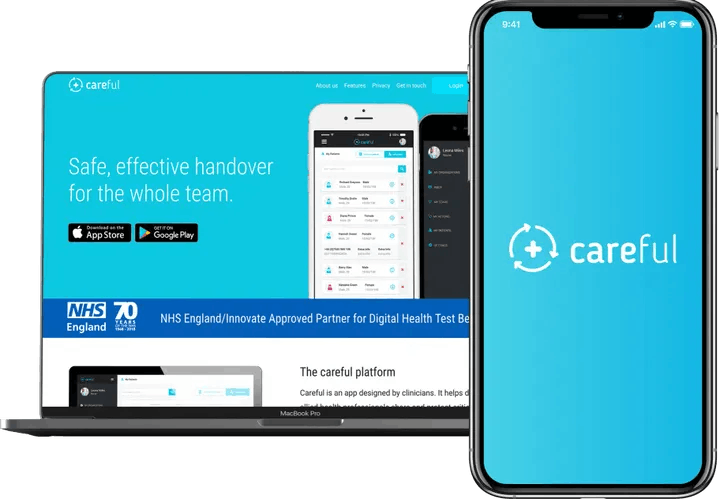
A great example of a company working in this space is Careful. Careful is a digital health platform that helps healthcare professionals like doctors, nurses, and allied health workers collaborate more effectively.
It links these professionals to communicate and share electronic medical records more efficiently to keep patients safe and ensure a smooth healthcare journey.
The app gives a complete picture of each patient's electronic health records, current health status, and future care plans. It makes it easier for healthcare teams to make quick decisions and smoothly hand off patients from one care provider to another.
Beyond being a tool for healthcare providers, Careful also facilitates communication between patients, their families, and caregivers, putting the patient at the centre of their care.
With features that encourage collaboration and improve patient care, Careful is a useful resource for healthcare professionals who aim to work more efficiently and to improve patient outcomes.
We're excited to have worked with Careful to develop this innovative health platform. Read our case study
Patient Empowerment
Custom healthcare software is transforming the doctor-patient dynamic, putting greater control into the hands of patients.
This shift improves convenience and could directly contribute to better health outcomes and more positive patient experiences. Here's how software empowers patients:
✅ Manage appointments: User-friendly online portals allow patients to schedule, reschedule, or cancel appointments at any time. This flexibility reduces missed appointments.
✅ Self-monitor health: Apps and connected devices allow patients to track vital signs (blood pressure, glucose levels), log symptoms, or manage medication adherence. This active involvement improves disease management and catches potential health issues at an early stage.
✅ Access records: Secure patient portals provide access to electronic medical records, test results, and doctors’ notes. Being informed about their own health encourages patient engagement.
✅ Secure communication: Some solutions offer secure messaging with healthcare providers, allowing patients to ask non-urgent questions, get clarification on instructions, or receive follow-up support from the comfort of their own homes.
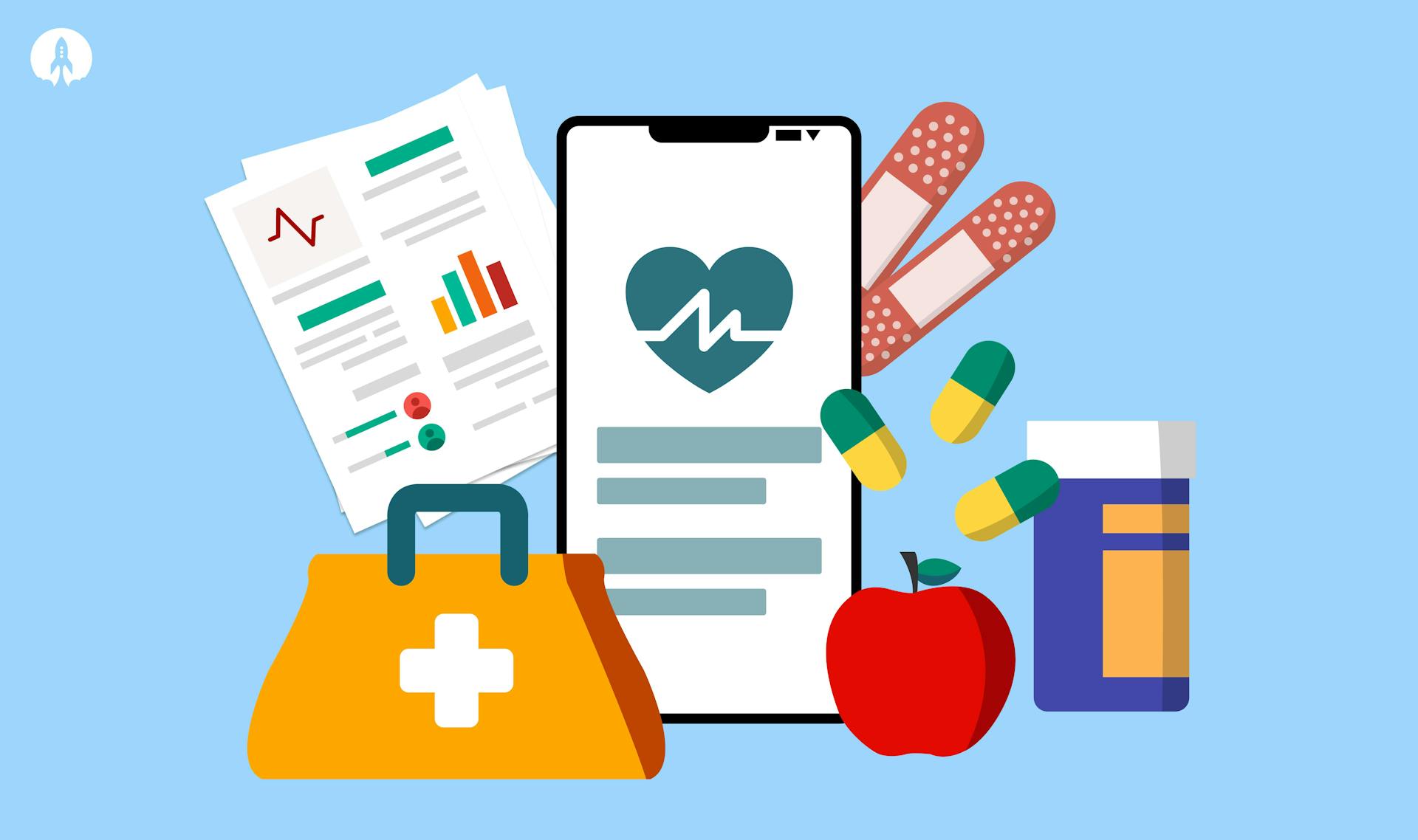
Conclusion: The Future of Healthcare is Bright – and Software is the Key
The healthcare software market is booming for a reason. Innovative solutions have the power to solve pressing challenges in care delivery, patient experience, and system-wide efficiency.
Current trends, from AI's rise to the demand for patient empowerment, point towards a future where technology and the healthcare industry are inseparable.
Rocketmakers: Your Healthcare Software Development Partner
Building successful software in the UK healthcare industry requires more than technical skill. Here's why Rocketmakers is the right partner to bring your healthcare vision to life:
✅ We understand the complexities: Our team of healthcare software developers has deep expertise in navigating NHS requirements, ensuring your software is compliant, secure, and aligns with the goals of healthcare providers.
✅ Innovation is our passion: We help you harness cutting-edge technologies like AI and ML to create solutions that make a real difference in patients’ lives.
✅ User-centric approach: We prioritise patients’ needs and optimise products’ usability, ensuring your software is not just functional but truly empowers both patients and healthcare professionals.
✅ Proven results: See how we've helped others achieve success with our healthcare software development solutions. Here's a link to our case studies.
Together, let's build the future of healthcare services, one innovative solution at a time. Connect with us today.



